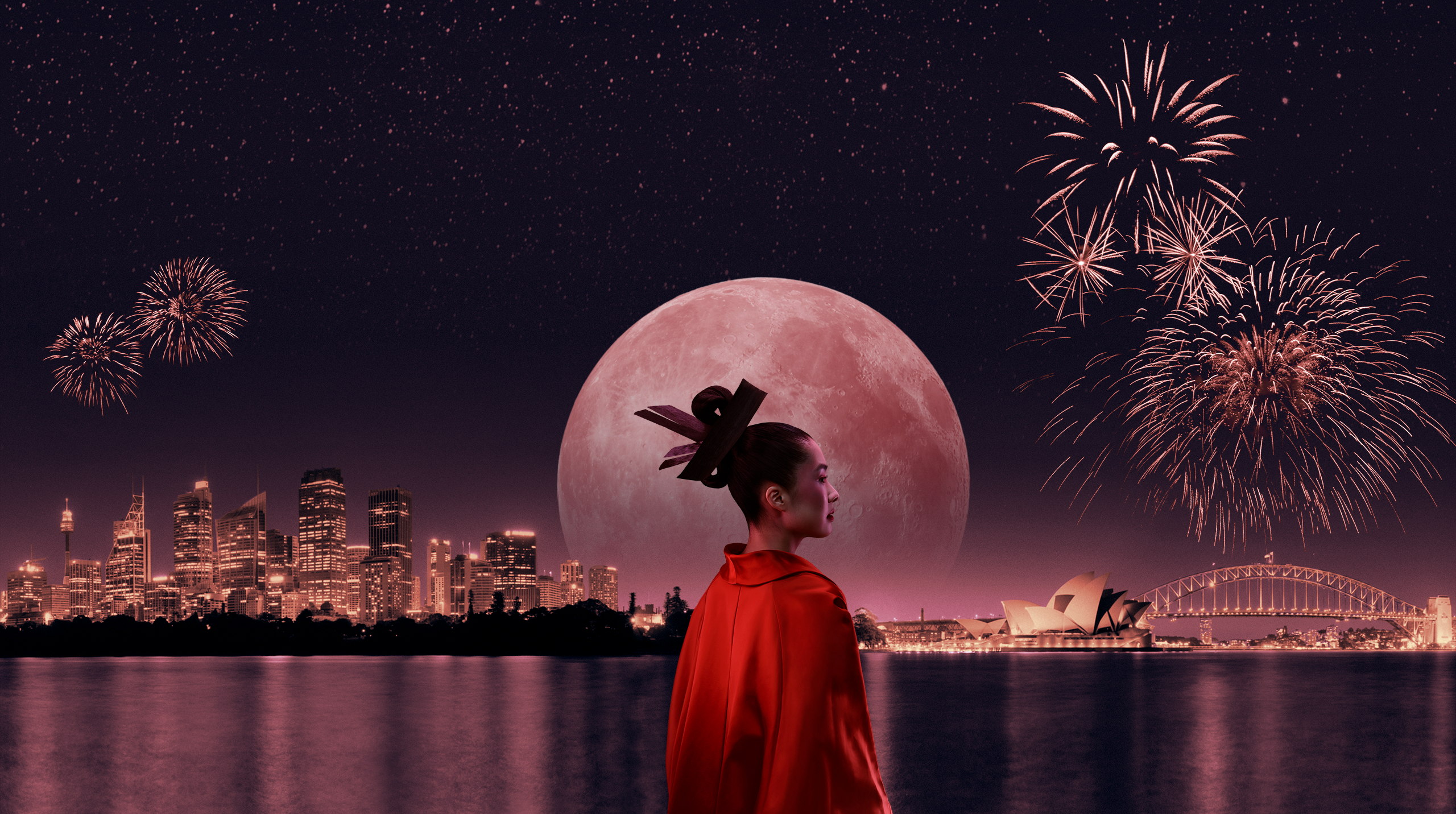Cheat Sheet:
Madama Butterfly
on Sydney Harbour

In a nutshell
The composer: Giacomo Puccini. Italian. 20th Century. Also famous for La bohème, Tosca and Turandot.
The music: There are numerous Japanese influences in this opera, with the inclusion of both bells and tam-tams often seen in Japanese songs and arrangements.
The big hit: The heartbreaking 'Un bel di vedremo' (One Beautiful Day) is the aria that every soprano dreams of singing.
The setting: Nagasaki, Japan
The history: The opera gathers together Balasco’s play (based on John Luther Long’s short story) and material from Pierre Loti’s novel Madama Chrysanthème to create the full, three-act tale of Cio-Cio-San’s betrayal.
A quirky fact to impress your date: Puccini rewrote it five times — and the fifth and final is the one usually performed around the world.
Who was the composer?
Giacomo Puccini. Born in Tuscany in 1858, Puccini is an Italian composer who took Verdi’s crown as the most prominent composer of Italian opera in his day.
Renowned for his love affairs, Puccini left a trail of broken hearts across Italy, but also left us music-lovers 10 beautiful operas, three of which are regularly in the top 10 of operas performed around the world.
What makes Puccini, Puccini?
Puccini’s music is sweeping, uplifting, enchanting and always intensely moving. His real genius, however, was to combine that music with stories about ordinary people.
The composer himself once said his success was due to putting “great sorrows in little souls”.

Italian composer Giacomo Puccini on his piano.
Italian composer Giacomo Puccini on his piano.
What happens in the story?
The American naval officer, Pinkerton, is exploring the world in the name of war and pleasure. He sets his sights on the best and fairest of the land: the stunning Japanese beauty Cio-Cio-San.
Fascinated by her exotic beauty, Pinkerton marries her on sight, while Cio-Cio-San, enthralled by his American ways and promise of a modern life in America, falls wholeheartedly in love with the stranger. But Pinkerton already has a foot out the door, looking forward to the day he will marry “a real wife, a wife from America.”
Years pass, and Cio-Cio-San waits faithfully for her husband’s return from distant shores. Long abandoned by her family, she is alone with her servant Suzuki and a living memento of her American love. She refuses all offers of marriage, singing of her great hope for the day Pinkerton will return. The faithful Suzuki tries in vain to convince her to abandon hope.
But when his ship comes in, Pinkerton is not alone. As dawn breaks, what will become of Butterfly’s great hope?
Who are the main characters?
Cio-Cio-San — (nickname Butterfly), a former geisha
B.F. Pinkerton — an American naval officer
Suzuki — Butterfly’s devoted maid
What's the big hit?
The heartbreaking 'Un bel di vedremo' (One Beautiful Day) is the aria that every soprano dreams of singing. Butterfly is imagining the day her beloved Pinkerton will return — but even as the music soars with her eternal optimism, there is a suggestion of melancholy in Puccini’s score, foreshadowing the morning.
Where have I heard that?
Butterfly’s music is used to startling effect in the film Fatal Attraction.
Something to listen out for
You can’t miss the famous strains of The Star Spangled Banner, which play as the American Pinkerton waits for his Japanese bride and again as Butterfly dreams of her American life.
There’s plenty of Japanese influence in Puccini’s score too — he includes Japanese bells and tam-tams in the orchestra and uses the pentatonic scale to create an “exotic” sound.
This production is...
A grand outdoor staging by Spanish theatrical innovator Àlex Ollé, from the groundbreaking company La Fura dels Baus. In this version, Pinkerton is transformed into a contemporary businessman and developer, who has his eyes set on the paradise where he finds Cio-Cio-San.

Lluc Castell's costume designs for Madama Butterfly.
Lluc Castell's costume designs for Madama Butterfly.
A little history
Puccini was in the audience in London to see David Belasco’s one-act play Madam Butterfly in 1900. He was captivated, and wrote to the publisher, “The more I think about Butterfly, the more excited I become. Ah, if only I had it here with me to work on!”
The resulting opera gathers together Belasco’s play (based on John Luther Long’s short story) and material from Pierre Loti’s novel Madama Chrysanthème to create the full, three-act tale of Cio-Cio-San’s betrayal.
When Butterfly premiered in 1904, it was a fiasco. Puccini described it as “a real lynching… an orgy of lunatics, drunk on hate”.
He reworked the opera, adding Pinkerton’s agonised “Addio, fiorito asil” aria to the music and making theatrical changes to give Butterfly both more dignity and a greater isolation, to add to the final tragedy.
Puccini rewrote it five times — and the fifth and final is the one usually performed around the world.
Conversation starters
- Puccini was quite the Pinkerton himself — a womaniser who had quite a reputation among the ladies.
- He wrote the opera at a time when his marriage was falling apart, as news of his recent affairs broke.
- The composer himself believed it was his best: “the most heartfelt and evocative opera I have ever conceived”.

Handa Opera on Sydney Harbour: Madama Butterfly
Fleet Steps, Mrs Macquaries Point, Sydney
24 March to 23 April 2023
